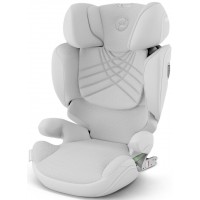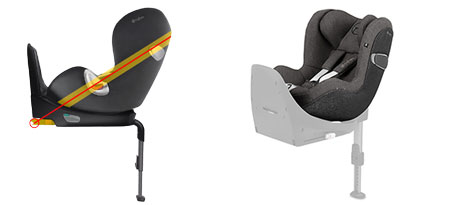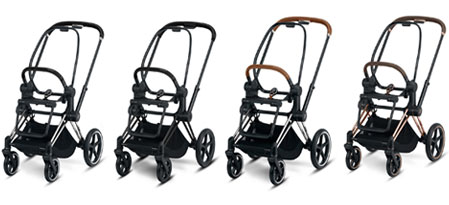- All Articles
- Comparison of booster and car seat
Comparison of booster and car seat
The idea behind a child restraint system is to adapt the car's safety belt system to the size of the child. The standard UN R44/04 indicates that a booster seat for children weighing more than 15kg is theoretically sufficient to fulfill this purpose. The UN R129, on the other hand, provides that children are transported with car seats with backrest at least up to 135 cm high if homologated as an R129 booster seat. However, children should use a car restraint system up to the height of 150 cm.
Due to the compact design of a car seat with a backrest, we recommend using a car seat equipped with adjustable backrest and lateral protection. CYBEX group 2/3 car seats can only be used with the backrest. This is the only way to offer maximum safety for your child. When compared to seats with a backrest, booster seats do pose a higher risk of injury. The main problem is the missing side protection.
A child seat with a backrest has side protectors that prevent the child from hitting the window in the case of a side impact collision. With a booster seat, however, the vulnerable parts of the child’s body are not sufficiently protected. Additionally, the routing of the seat belt cannot be adjusted to the height of the child so that the belt is often too close to the neck.
Thanks to the backrest, the child is accompanied by the seat as it grows. Additionally, the child not only sits much firmer in the seat itself but is also much better protected due to the correct position of the seat belt.
Thanks to the backrest, the child is accompanied by the seat as it grows. Additionally, the child not only sits much firmer in the seat itself but is also much better protected due to the correct position of the seat belt.
Cybex is European chic, created with German pedantry, modern parents with childcare. All products of..
The CYBEX patented 3-position reclining headrest is part of our group 1/2/3 car seats and cleverly p..
The innovative Seat-to-Chassis technology creates a direct link between the seat and the chassis. ..
The Cybex Priam chassis is available in 4 variants: chrome black, chrome brown, matt black, rosegold..
The Cybex Mios chassis is available in 4 variants: chrome black, chrome brown, matt black, rosegold...














